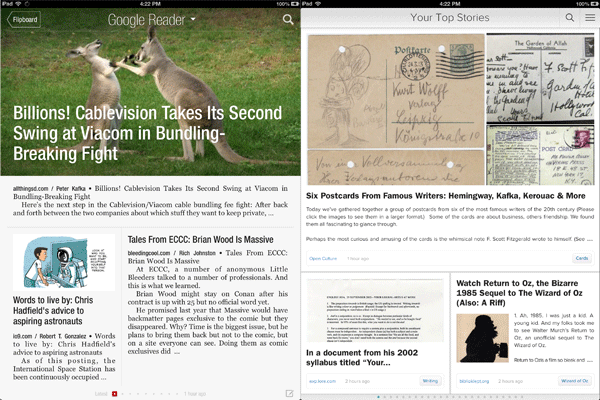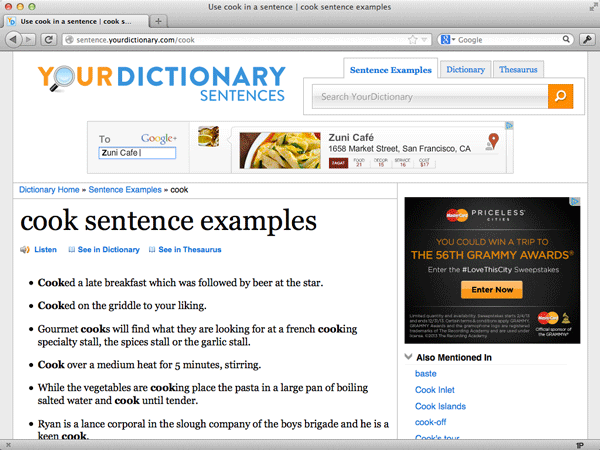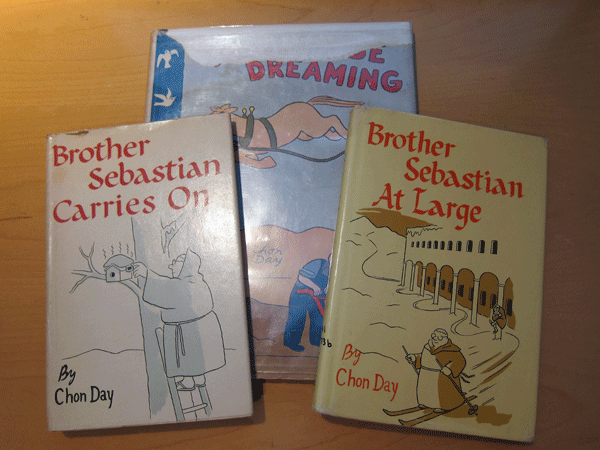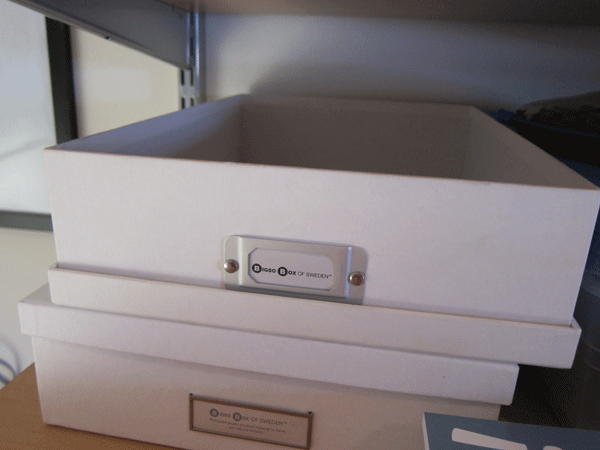This year I’m starting something new on the cartoon blog called Tools, Techniques, and the Trade. It’s an occasional in-depth look at the weird world of drawing cartoons for a living.
I’ll explain why my pencils have to be made from California Incense-cedar wood, I’ll show you how my Photoshop Actions work, and how I keep track of thousands of cartoons’ comings and goings. (Also, I love alliteration.)
First up is a look at the various places I write my best cartoons most often.
My Office

For years I wrote and drew cartoons at a coffee table in the living room. But when our second child was on the way we moved into a slightly larger house and I grabbed a little room downstairs for my office. It’s basically a closet, but I’ve managed to cram in two sets of bookshelves, two desks, a drafting table, a file cabinet, a taboret, a chair, a stool, and probably a quarter million LEGO in various stages of organization. (I’ll show you some pictures sometime.)
When I write in here it’s mostly at my desk. I stare out my little window and jot things down either on a notepad, or in TextEdit. If I’m really feeling writerly I’ll turn on Coffitivity.
It’s a quiet place, I’m surrounded by cartoons, and I can close the door. If you can wrangle yourself a little office in the basement, I highly recommend it.
The Library

The library is a terrific place to find inspiration, and I’m lucky enough that our local library is the second largest public library in the state.
I like to go here, pick up a few books off the New Reads shelves, grab a few magazines, and set up by the big sculpture-y thing upstairs. There’s a big window with lots of morning light, just enough background noise, and millions of ideas just waiting to be pondered. It’s terrific.
The Gym

This is something I discovered recently when both of the kids were finally old enough to be in school all day. I was looking for some exercise and began hitting tennis balls at a wall after dropping the kids off.
It felt good to get a bit of a workout, but what surprised me was how often cartoons ideas came to me while I hit. And not just cartoon ideas, but business ideas too. (I sussed out most of the details for my cartoon subscriptions at the tennis court.)
Now that it’s winter, and a terrible terrible winter at that, I’ve been going to the gym and writing while on the elliptical or the stairmaster, though not as often as I probably should.
There’s a ton of info on the link between exercise and creativity. It’s definitely worth checking out.
Driving

Driving is another one of those quiet reflective times, at least when I’m not shuttling the kids and/or the Mrs. around.
Sometimes I listen to the radio mining for little nuggets to play with, but sometimes I just enjoy the quiet and let things marinate in the ol’ noggin. Often I write like crazy on the drive home from the gym. It’s like a creative supercharging twofer.
But my absolute favorite, best, and most productive cartoon writing location is…
The Shower

The shower is a-maz-ing. I’ve written more ideas in the shower than I can count. In fact I’ve considered putting dry erase markers next to the shampoo. (I’m not kidding.) My buddy Jeff worked in advertising for years and will also tell you his best ideas came to him in the shower.
Apparently this is actually a thing that people have researched:
- Science Explains Why Our Best Ideas Come in the Shower
- Why Do Our Best Ideas Come to Us in the Shower?
- Why we have our best ideas in the shower: The science of creativity
- 20 Reasons Why the Best Ideas Come in the Shower
Seriously, Google “shower creativity” – you’ll be amazed.
Those are my favorite writing locations. Where do you find yourself doing your best writing?
Here’s some more on how I write my cartoons:
- How I Write Cartoons
- Writing Cartoons – 9 Ideas For Generating Ideas
- Editing A Cartoon Caption
- Writing Gags
And here’s some good general stuff on creativity:
- Nine of the Best Ways to Boost Creative Thinking
- The Creative Personality
- Boost Creativity: 7 Unusual Psychological Techniques








